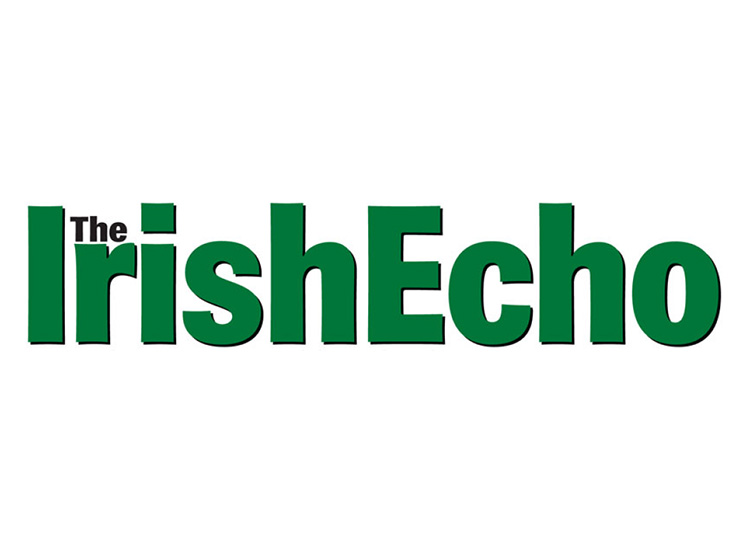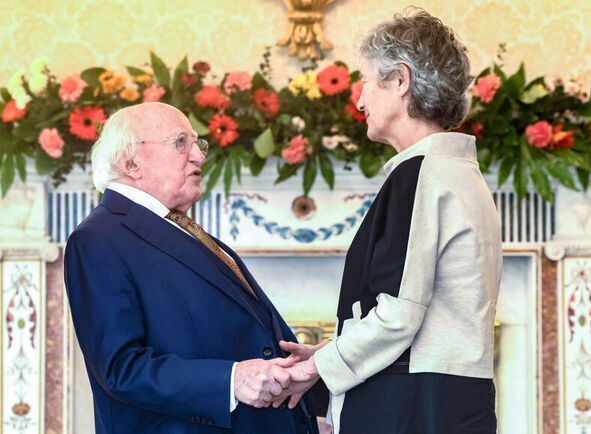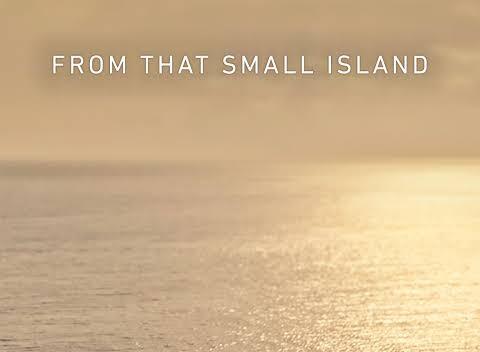You might expect Ireland's economic troubles to have hit artists more than other communities since their incomes are typically more tenuous.
That may be the case, but some, like Daragh Muldowney, have found impressive ways to thrive in the new economic climate. Muldowney is a photographer from Dublin whose exhibition "Jewellery Box" is currently showing at the Irish Consulate office in New York. The photographs are close-up images of the sea life around Ireland's long and indented coast, and the project was financed by a crowdsourcing website called Fundit.ie.
Muldowney's images bestow an identity on the unfamiliar creatures that live underwater - anemones, limpets, seaweed and other small creatures and plants, which, in close-up detail, have definite, and sometimes cantankerous, personalities.
One photo, entitled "Pals?," shows two beadlet anemones, one orange, the other a faded brown, sitting close beside one another.
"I thought they were the best of friends," Muldowney writes in the book of exhibition photos.
"I have since learnt that they were probably in the middle of a slow motion fight."
A speckled grey shell lies on a sandy seabed, displaying a serrated pink opening that looks like a mouth. It's a dog whelk, Muldowney explains - "the predator of the rock pools."
Eighteen Irish counties border the sea and ocean and over a period of 63 days Muldowney visited almost all of them.
He apologizes to Limerick folk for not including their county as it's coastline was muddy and not so good for photos.
The images from the other seventeen give viewers a chance to appreciate nature and take a step back from their daily lives.
"I hope people will get a sense of awe and surprise that so much beauty surrounds the coast of Ireland," Muldowney explained.
"I hope people will stop and look a little bit more - not just with pools but with life in general, just see what's under their noses rather than what's further away all the time."
Muldowney was 21 when he first became interested in photography. He went scuba diving in Florida and was astonished by the underwater world that he discovered.
Later on, at a seized-property auction in Maryland, he bought a second hand Canon camera, and taught himself how to use it. As he made mistakes and learned what worked, he realized that the pictures he took of nature were his best.
"I went after nature specifically in an abstract way from that point," he said.
He first brought his photographs to the public at the People's Photography Exhibition around the railings of St. Stephen's Green in Dublin. When 16 of them sold over two days, he decided to go full-time.
He quit his job selling sports equipment and instead spent his time snapping Iceland's glaciers and the Sahara Desert in Morocco. It was the middle of the Celtic Tiger boom, and Muldowney was commissioned to fit out plenty of corporate offices, as well as Dundrum Town Center on the south side of the city.
"I don't get any of those corporate gigs these days," he observed.
But Muldowney has found a different way to finance his art. Fundit provides money for creative projects based on a crowdsourcing model in which members of the public lend their support.
Like the U.S. platform, Kickstarter, it caters to individuals across many fields - fashion, TV, the arts, media, publishing and science. Participants post up information about their project and set a target sum. Muldowney's was €10,200 or $13,310.
They also advertise the rewards and benefits that contributors receive in return for payments. For instance, when people donated €10 ($13) to Muldowney's project, he would send them a personal card and thank them publicly on his website. Those who contributed €80 ($104) would get three signed copies of his Jewellery Box book sent to an address of their choice. The possibilities extended to a €2,000 ($2,609) donation. For that, you could expect a weekend photography workshop for four in a location of your choice, and - a nice touch - Muldowney would provide wholesome cooking for the duration of the trip.
Fund it takes a small percentage of the proceeds, and if a project does not reach its target by a certain date, then all the funding is cancelled.
"Jewellery Box" exceeded its target by more than €2,000 and Muldowney was full of praise
for this financing model.
"Not only does it generate the funding, but it creates awareness about the project," he noted. "And there's a community sense built around it - people feel involved."
"Jewellery Box" can be seen at the Consulate General office in Manhattan until October 31. Muldowney plans to rent a van and transport it to Atlanta on November 2, where its temporary home will be at the exhibition space of a PR company, Fitzgerald & Co.
Looking ahead, it may travel to other parts of the U.S., such as Boston, Chicago and Washington D.C.
Even if those details are not confirmed, Muldowney's goal for the photographs is clear and that is to convey the childlike sense of peace and calm that can come from staring for long enough at the extraordinary world within our world that is a tidal rock pool.











